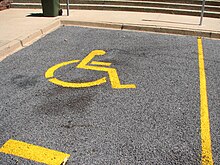I get a real buzz when people decide to change to a healthier lifestyle. Being a parent I have always been amazed at how you spend years telling your sons to tidy up their rooms, then along comes a girl and coyly suggests that perhaps the young lads room could do with a clean up, and hey presto, the lights come on and overnight the room turns into something a human can live in! It just goes to prove how quickly change can occur with the right stimulus.
And it's the same with health issues - losing weight, getting physically active, stopping smoking and cutting down on alcohol - there is a constant need to determine that unknown "snowflake" that starts the avalanche of change that so many need to live healthier, happier lives. The great news is that there is a veritable snowstorm of opportunities now that the Web and mobile IT devices can provide so many options and encouragement for those thinking of embarking on a healthier life.
In a paper recently published in the June issue of the American Journal of Cardiology Dr Samia Mora and colleagues demonstrated how the use of a web based program helped women with known cardiac risk factors reduce their risk profile. Not only did they become more active but their Quality of Life also improved and Dr Mora et al also demonstrated for the first time "an independent positive associations between energy, well-being and body image with Physical Activity guideline compliance" - not only were they doing more but they were feeling good about themselves too which is a win win in anyone's book.
The program they used was the well tried Choose to Move program on the American Heart Foundation Webpage which has now been expanded as the Go Red For Women BetterU Program
Reading Dr Mora's paper, there was a big difference between those who joined the program during the research period - 15,064 - and the number who completed the questionnaire emailed to them - 4003 - and the ones who completed the follow up survey after completing the 12 week course - 972! This just confirms my observation that we humans hate filling out questionnaires but it no way reduces the impact of this very important study. Also those who did complete the surveys were in the main white and educated: just imagine the massive impact of the program when this demographic is enlarged.
But here's my take on this: a small group of Docs do a study and show that a Web based tool can have a big impact on the health and quality of life of a group of women at risk of developing heart disease. The exciting thing will be when all family physicians routinely offer such programs to every "at risk" women who comes into their Office/Surgery for advice. The family physician still has a vital role to play, but their impact can reverberate for a further 12 weeks if the patient has the options of signing up for the Go Red for Women BetterU program as Dr Mora suggests.
Reference: Lieber SB, Redberg RF, Blumenthal RS, Gandhi A, Robb KJ, Mora S. A national interactive Web-based physical activity intervention in women, evaluation of the American Heart Association Choose to Move program 2006-2007. American Journal of Cardiology. 2012 Jun





